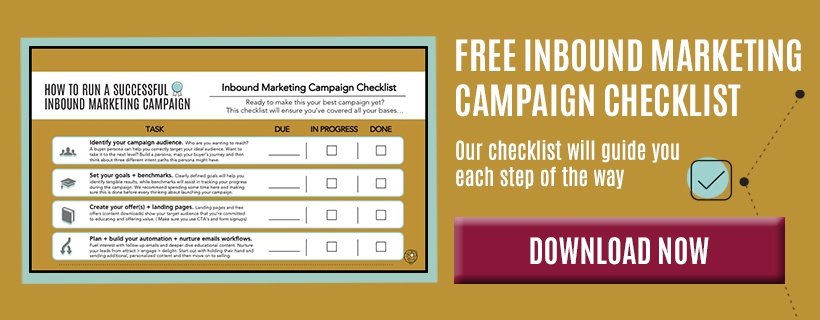Increasing blog revenue is one heck of a task. An in-depth study of 1,117 bloggers found that the most common reason for blogging or having a blog is to generate revenue. A company blog will drive leads, which equates to revenue.
At the end of the day, your blog is a revenue generation source — be it in the form of sales, leads, or affiliate commissions. And doubling or tripling your blog revenue with the same traffic you are receiving now is possible. A simple yet very effective tactic can help your brand significantly increase blog revenue. Here’s how…
The Power of a Call to Action
A call to action (CTA) is the most important part of revenue generation as it helps readers convert by filling a form or performing a task. CTAs guide readers on what they're supposed to do, where they have to click, and what they'll get in return after clicking on a CTA.
While you likely already understand the basics of a CTA, consider this:
You can’t add random CTAs in a blog post and expect readers to click and convert. Adding links to random internal pages and posts in every blog post to fulfill the need for internal linking doesn’t work either.
Here’s what does work: Strategically adding CTAs to the top, middle, and bottom of the posts and linking to relevant landing pages based on the sales funnel stage.

Adding relevant CTAs to blog posts based on the reader stage in the sales funnel is what increases conversion rate and revenue. For example, if you have a blog post that’s targeting customers at the awareness stage, you need to add multiple CTAs to other awareness stage content, instead of adding links to decision or advocacy stage content.
This calls for having a robust blogging strategy with each post having a clear purpose and target audience. Your team must decide the primary audience of a blog post and what sales cycle stage it targets and then identify the most relevant content for CTAs.
Here is an example from Blue Corona. They did an article on Facebook ad types:

Here is a strategic CTA to their guide on Facebook targeting options, which is, technically, the next step. Anyone who knows about the Facebook ad types might now be interested in understanding targeting options:

Here is an example from HubSpot:

The blog title and CTA are targeting the readers who are at the same sales funnel stage. This integration is the essential part of your blog if you want to double or triple blog revenue.
Steps to Using CTAs to Increase Blog Revenue
If you are serious about increasing blog revenue, you need to create a strategy and ensure that each blog post you publish has a purpose. Don’t ever write and publish a blog post without any clear objective.
Here is a step-by-step guide on how to increase blog revenue using targeted CTAs:
Step #1: Link Blog Posts to Sales Funnel Stages
Start tagging blog posts to your sales cycle and funnel stages. Each blog post must target a funnel stage. If you have existing blog posts that aren’t linked to any funnel stage yet, you need to use your analytics tool to tag them.
For new blog posts that are in the pipeline, link them to a relevant sales funnel stage.
The idea is to have all the blog posts properly tagged in your database (e.g., Excel sheet) so you can filter and find posts for any specific stage (e.g., awareness) with a few clicks.
Step #2: Create and Identify the Most Appropriate Offers for Each Stage
Do you have offers for each sales funnel stage?
The offer isn’t necessarily your core product; rather, it could be lead magnets, discounts, webinars, or anything valuable that you can use to generate leads or advance customers through the sales cycle.
You need to have multiple offers for each stage in the funnel. You can’t expect potential customers to move to the decision stage right away without any personalized contact with your brand.
Tag existing offers (e.g., lead magnets) to the appropriate funnel stage. This is where you can use your analytics tool to analyze historical click and conversion data.
Step #3: Add and Test CTAs
Once you are done with the tagging and mapping, you need to add CTAs with relevant offers and links in each post. The idea is to make sure you are sending readers to the most appropriate offer that’s relevant to the blog post.
Irrelevancy is a big NO.
You can use the HubSpot CTA tool to create personalized CTAs to supercharge blog revenue. You can A/B test CTAs with HubSpot to help you see what works best. Setting up A/B tests with the HubSpot CTA tool is an easy and straightforward process that requires no design or coding knowledge. Anyone can do it without any issues.
Where should you add CTAs in a blog post?
Generally, you should add CTAs throughout your blog post in the top, middle, and/or bottom. Once set up, you need to analyze and test different CTA locations. It is essential to analyze and test different CTA variations and positions to see what works best.
CTA Tips and Tricks
Adding CTAs in your blog posts to increase blog revenue isn’t enough — you need to ensure that the CTAs grab attention and get noticed. The appearance of the CTA comes first and the link it is pointing to comes second.
Here are a few advanced tips and tricks to improve CTA visibility and CTR:
Use Contrasting Color
Using contrasting CTA button colors makes it prominent. It grabs attention. Detecting contrast and identifying different elements is a built-in characteristic. The more salient your CTA is, the better, because it will become identifiable.
Here is an example from OptinMonster:

There are two different CTAs, and both are visually appealing.
Using other effects such as whitespace around the CTA, shadow, border, color shift on hover, etc. can make CTAs prominent.
Reject/Accept Offer
Making readers accept or reject your offer improves the conversion rate to a great extent. Here is an example of the CTA that increased conversion rate by 400 percent:

You need to tell readers what they'll “miss” if they'll reject your offer. This triggers loss aversion and readers will often click the CTA to avoid losing the benefits.
Use Simple, but Effective Words
The CTA must describe the benefits to the readers in concise yet simple language. Simply writing “click here” won’t work — you need to explain why a reader must click on the CTA.
Explain what’s in it for them.
Here is an example from Mailchimp:

The CTA is added in a relevant post titled “5 Easy Ways to Promote Your Website and Grow Your Business” and it clearly mentions why you should click it (to promote your business).
Adding power words in the CTA while keeping it descriptive makes it even better. Check out this list of power words that you can use in CTAs to emotionally connect with the readers.
Conclusion
Now that you know how to increase your blog revenue using strategic CTAs, you can be on your way to doubling or tripling it quickly. While you may need to put in more work initially if you have a lot of idle blog posts with no CTAs, the hard work will pay off.
You can always reach out to a reliable inbound marketing agency, such as First Page Strategy, to help you increase blog revenue with this powerful tactic. We can work with you to match your blog posts to your sales funnel, create great offers for every reader stage, and add and test your new, targeted CTAs. Contact us to talk about how we can partner with you.






